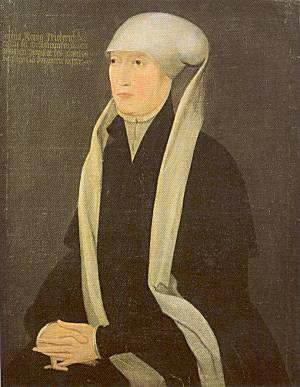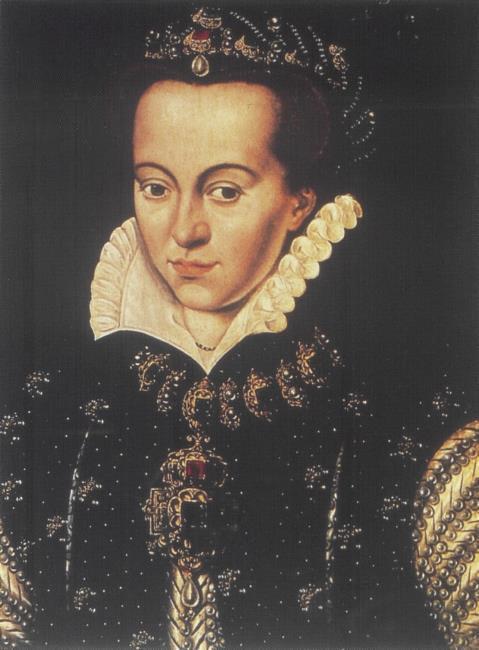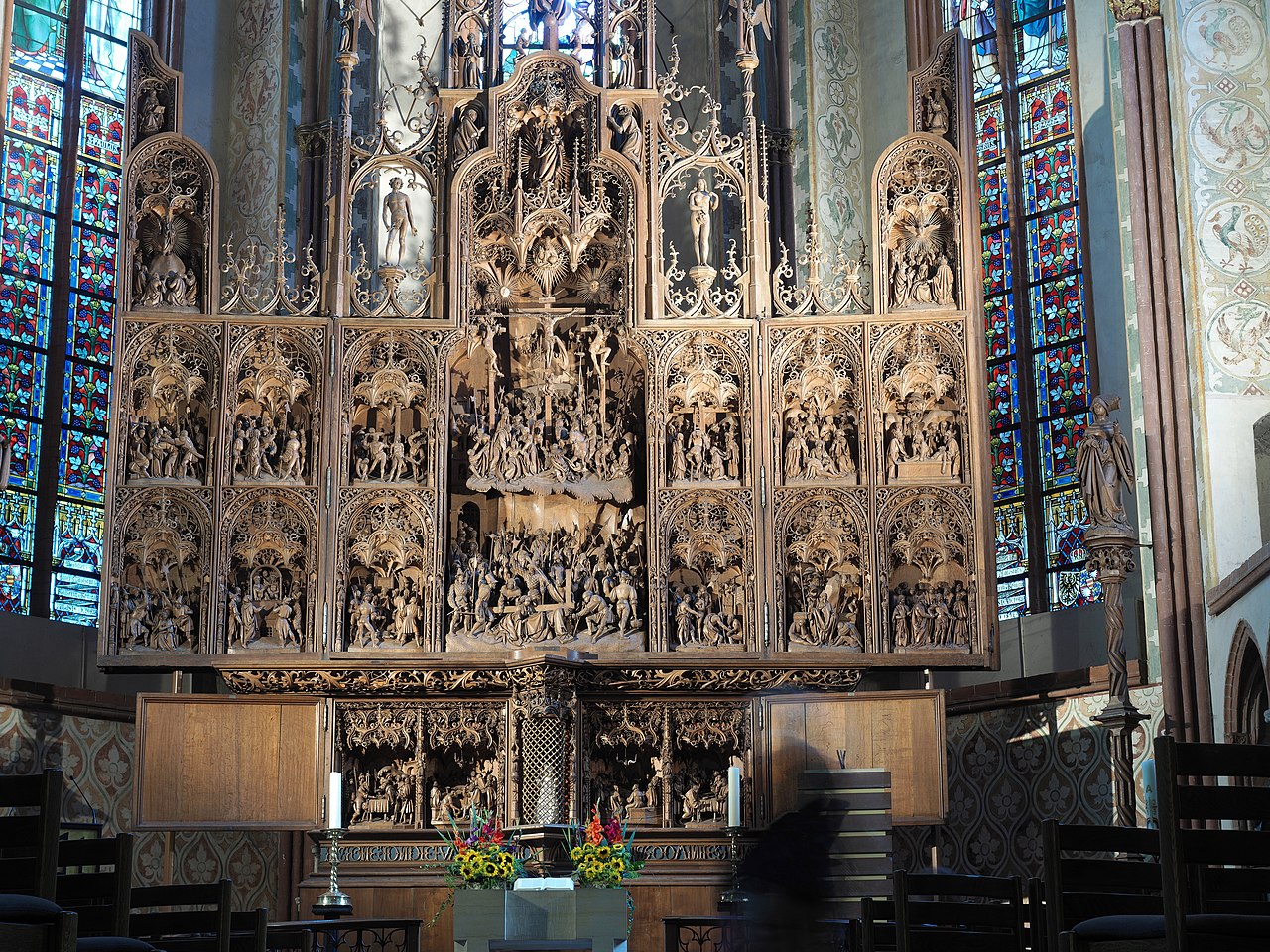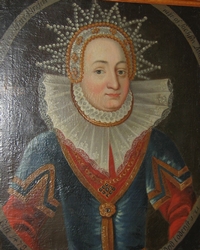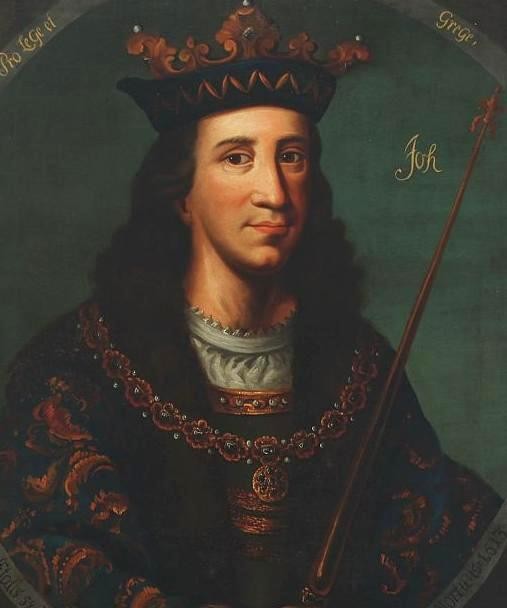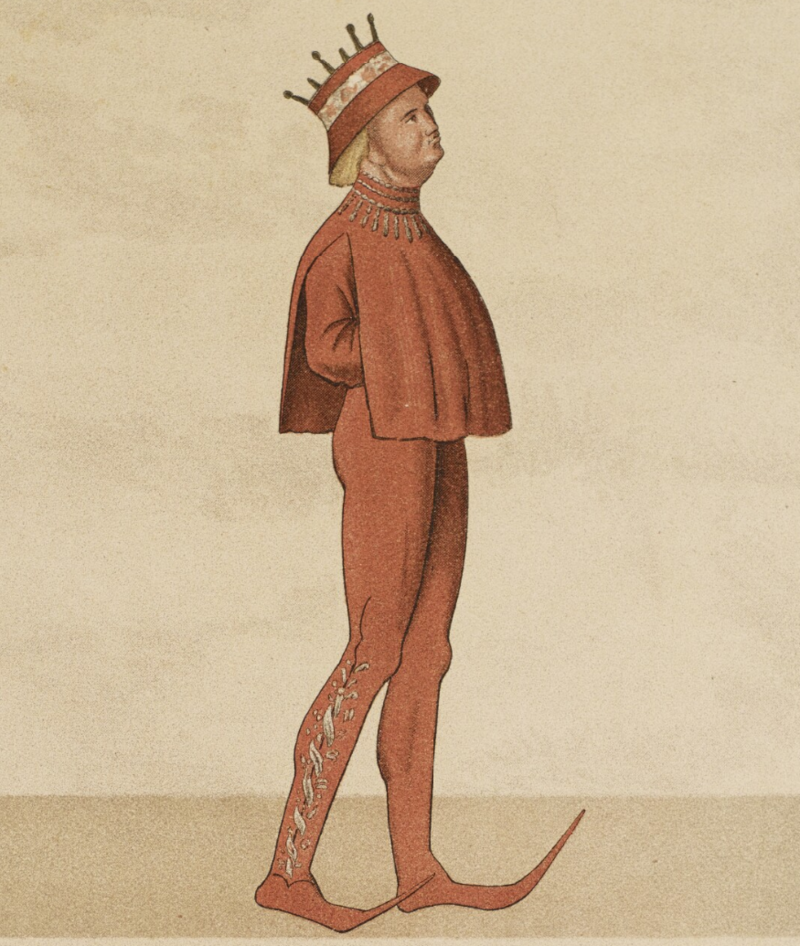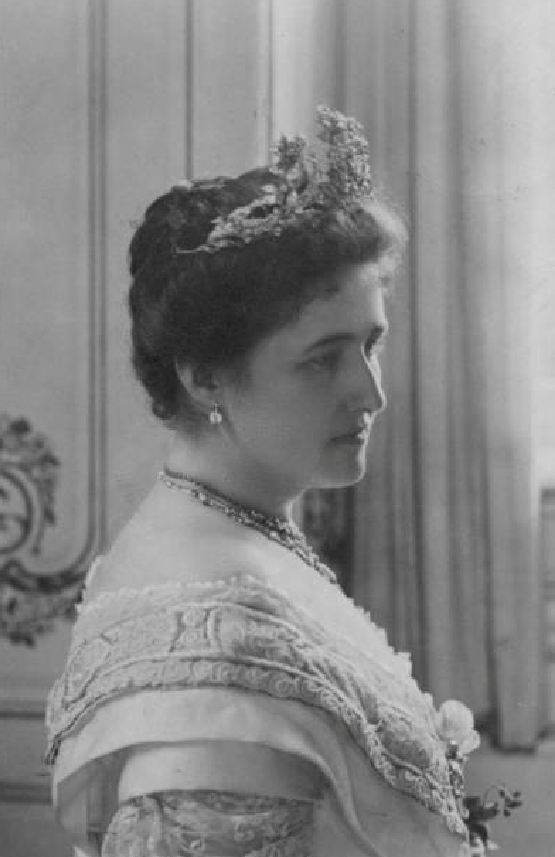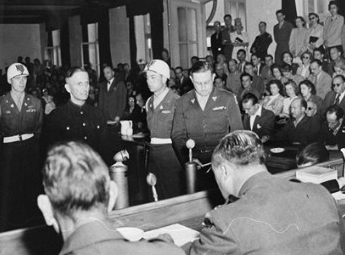by Susan Flantzer
© Unofficial Royalty 2021

Sophie of Mecklenburg-Güstrow, Queen of Denmark and Norway; Credit – Wikipedia
The wife of Frederik II, King of Denmark and Norway, Sophie of Mecklenburg-Güstrow was born on September 4, 1557, in Wismar, Duchy of Mecklenburg, now in the German state of Mecklenburg-Vorpommern. She was the only child of Ulrich III, Duke of Mecklenburg-Güstrow and his first wife Elizabeth of Denmark, daughter of Frederik I, King of Denmark and Norway and his second wife Sophie of Pomerania. Sophie’s mother Elizabeth died in 1586 while returning from visiting her daughter in Denmark. After the death of his first wife, Sophie’s father Ulrich III married Anna of Pomerania but their marriage was childless.

Sophie’s husband Frederik II, King of Denmark and Norway; Credit – Wikipedia
In Denmark, marriage negotiations had been unsuccessfully conducted for Frederik II, King of Denmark and Norway during the end of his father’s reign and during the first thirteen years of Frederik’s reign. The negotiations were difficult because Frederik insisted on meeting the prospective bride before committing to her. In 1572, Frederik’s aunt Elizabeth of Denmark and her husband Ulrich III, Duke of Mecklenburg-Güstrow (Sophie’s parents), arranged for Frederik to meet a prospective bride Margaret of Pomerania at Nykøbing Castle in Denmark. Elizabeth and her husband brought along 14-year-old Sophie. Frederik II and Sophie were half-first cousins through their grandfather Frederik I, King of Denmark and Norway, Frederik through his first wife Anna of Brandenburg, and Sophie through his second wife Sophie of Pomerania. Instead of being interested in Margaret of Pomerania, Frederik II was interested in Sophie. On July 20, 1572, in Copenhagen, Denmark, Frederik II and Sophie were married.
Frederik II and Sophie had seven children. Through their daughter Anna, who married James VI, King of Scots, later also James I, King of England, they are ancestors of the British Royal Family.
- Elizabeth of Denmark, Duchess of Brunswick-Lüneburg (1573 – 1626), married Heinrich Julius, Duke of Brunswick-Lüneburg, had ten children
- Anna (Anne) of Denmark, Queen of Scots and England (1574 – 1619), married James VI, King of Scots, later also James I, King of England, had seven children including Charles I, King of England
- Christian IV, King of Denmark and Norway (1577 – 1648), married (1) Anna Katharina of Brandenburg, had six children including Frederik III, King of Denmark and Norway (2) Kirsten Munk, morganatic marriage, had ten children
- Ulrik of Denmark, Prince-Bishop of Schwerin (1578 – 1624), married Catherine Hahn-Hinrichshagen, morganatic marriage, no children
- Augusta of Denmark, Duchess of Holstein-Gottorp (1580 – 1639), married Johann Adolf, Duke of Holstein-Gottorp, had eight children
- Hedwig of Denmark, Electress of Saxony (1581 – 1641), married Christian, Elector of Saxony, no children
- Hans of Denmark, Prince of Schleswig-Holstein (1583 – 1602), unmarried, died in his teens

Frederik II and Sophie; Credit – Wikipedia
Despite a 23-year age difference, Frederik II and Sophie had a happy marriage. Sophie is consistently mentioned in Frederik’s handwritten diary as “mynt Soffye“, meaning “my Sophie”. She never interfered in government matters, always accompanied him on his travels, participated in his hunts, and nursed him when he was ill. Sophie was interested in books, visited the Danish pioneering astronomer Tycho Brahe, collected folk songs, and encouraged historian Anders Sørensen Vedel to publish his Hundredvisebogen, a collection of a hundred Danish folk songs he had gathered that became the foundation of Danish literary tradition.
Frederik II, King of Denmark and Norway died, aged 53, on April 4, 1588. When her husband died, Sophie was a thirty-year-old widow with seven children ranging in age from five-years-old to fifteen-years-old. Her eldest son who succeeded his father as Christian IV, King of Denmark and Norway was only eleven-years-old. Sophie wanted to play a role in the government but was given no role in her son’s regency council. From 1590, she did act as regent of the duchies of Schleswig and Holstein for Christian as was the custom in the duchies. Sophie arranged the marriages and dowries for her daughters including a marriage for her daughter Anna (Anne) with the son of Mary, Queen of Scots, James VI, King of Scots who also became King of England upon the death of Queen Elizabeth I of England.

Nykøbing Castle; Credit – Wikipedia
In 1593, when Christian IV was declared of age, Sophie engaged in a power struggle with the regency council and the Danish Council of State. According to custom, she wanted the duchies of Schleswig and Holstein to be divided between her two younger sons but was unsuccessful. In 1594, Sophie was forced to retire to her dower property Nykøbing Castle on the island of Falster in Denmark.

Sophie of Mecklenburg-Güstrow, Queen of Denmark and Norway; Credit – Wikipedia
Sophie managed her estates on the Danish islands of Falster and Lolland so well that her son King Christian IV borrowed money from her on several occasions for his wars. She also engaged in trade and money-lending with Danish nobles. Sophie had a great love of knowledge and studied chemistry, astronomy, and other sciences. She often visited her homeland Mecklenburg and when her daughter Hedwig married Christian II, Elector of Saxony in 1602, she attended the wedding in Dresden, Saxony.

Tomb of Frederik II and Sophie – Photo by Susan Flantzer
Sophie survived her husband by forty-three years, dying on October 14, 1631, at the age of 74, at Nykøbing Castle on the island of Falster in Denmark and was buried with her husband Frederik II in the Chapel of the Magi at Roskilde Cathedral in Roskilde, Denmark. At the time of her death, she was the richest woman in Northern Europe.
This article is the intellectual property of Unofficial Royalty and is NOT TO BE COPIED, EDITED, OR POSTED IN ANY FORM ON ANOTHER WEBSITE under any circumstances. It is permissible to use a link that directs to Unofficial Royalty.
Kingdom of Denmark Resources at Unofficial Royalty
- Kingdom of Denmark Index
- Danish Orders and Honours
- Danish Royal Burial Sites: House of Oldenburg, 1448 – 1863
- Danish Royal Burial Sites: House of Schleswig-Holstein-Sonderburg-Glücksburg, 1863 – present
- Danish Royal Christenings
- Danish Royal Dates
- Danish Royal Residences
- Danish Royal Weddings
- Line of Succession to the Danish Throne
- Profiles of the Danish Royal Family
Works Cited
- Da.wikipedia.org. 2021. Sophie Af Mecklenburg. [online] Available at: <https://da.wikipedia.org/wiki/Sophie_af_Mecklenburg> [Accessed 18 January 2021].
- De.wikipedia.org. 2021. Sophie Von Mecklenburg (1557–1631). [online] Available at: <https://de.wikipedia.org/wiki/Sophie_von_Mecklenburg_(1557%E2%80%931631)> [Accessed 18 January 2021].
- En.wikipedia.org. 2021. Sophie Of Mecklenburg-Güstrow. [online] Available at: <https://en.wikipedia.org/wiki/Sophie_of_Mecklenburg-G%C3%BCstrow> [Accessed 18 January 2021].
- Flantzer, Susan. 2021. Frederik II, King of Denmark and Norway. [online] Available at: <https://www.unofficialroyalty.com/frederik-ii-king-of-denmark-and-norway/> [Accessed 18 January 2021].





